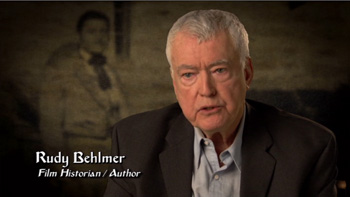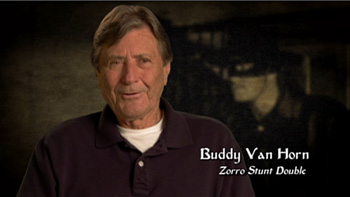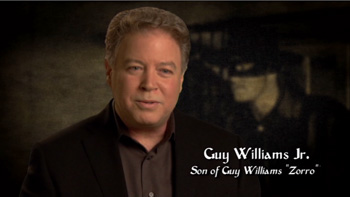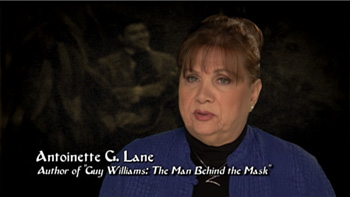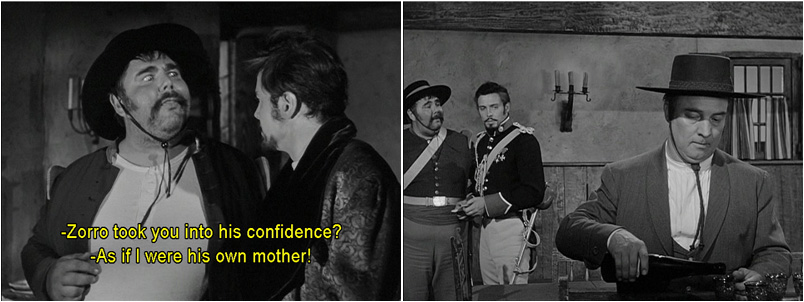|
Comments |
Image:
Except for except for Maltin's introductions and three of the
extra features (which are in 16x9 color, interspersed with
footage from the series) all of the made-for-television episodes
are in academy ratio black & white, the bulk of which are in
beautiful condition. Aside from the opening credit sequence
duplicated for each episode, which is dark and grainy with
evidence of oversharpening, enhancement, halos and occasional
vertical banding, the episodes that I sampled from both sets are
gorgeous – almost as sharp, dimensional, and extended a
grayscale as we would expect from a well preserved feature film
from the 1940s and 1950s, with the second season even better
looking than the first. The original attempts at day-for-night
shooting are preserved, without brightening. I found no evidence
of problematic transfer issues, blemishes or dropped frame. A
light grain is evident, possibly a judiciously applied DNR for
Season One – I'm not sure, though there is sometimes a slight,
easily ignored yellow cast. The four post- season hour-long
movies, however, are somewhat less well preserved and are
inconsistent in quality from scene to scene.
Audio:
Considering gives us the original mono mix for the TV episodes,
and they are as clear and crisp as hoped for. There is no
attempt to enhance or exaggerate effects, so the result is about
what we would have heard 50 years ago except that our present
sound systems are likely to be much better.
Extras:
Each season is complete on five discs, with disc six reserved
for extra features that are not duplicated on each set. Leonard
Maltin is on hand to introduce the series to old and new
audiences and to put everything in context in his brief intros.
Each box set includes the complete work of Guy Williams as Zorro
for Disney for television – El Bandido and Adios, El Cuchillo
appear in the first season box, and The Postponed Wedding and
Auld Acquaintance in the second. (Look for Rita Moreno and
Gilbert Roland in prominent roles.) These made their original
appearances in the Disney Anthology Series for television in the
years immediately following the second season. Disney produced
two feature films culled from the TV series: The Sign of Zorro
(1958) and Zorro, the Avenger (1959) and are not, as such,
included in these sets.
There is a superb and nostalgic segment, titled "Behind the
Mask," which profiles the career of Guy Williams, though very
much concentrating on his work with Disney (though it gives a
moment's homage to his work on Lost in Space. It is guided by
Williams' son, Guy Jr. and his biographer Antoinette Lane, with
help from the star's stunt double, Buddy Van Horn and others
that had a direct connection with the series. Among other
things, we learn that all of the swordplay, which is very much
in the style of movies from the 40s and 50s, is performed by
Williams, who also contributed some ideas for the character of
Don Diego.
"A Trip to the Archives" from the second season volume turned
out to be not what I expected, though it is interesting all the
same: Leonard Maltin and Guy Williams Jr. visit the Disney
Archives Museum to check out Zorro's original costumes,
memorabilia and merchandizing. "The Life and Legend of Zorro"
starts off promisingly with Rudy Behlmer speaking about the
characters originally conceived by writer Johnston McCulley back
in 1919, followed by the Douglas Fairbanks and Tyrone Power
incarnations on film with a stop at Republic Pictures before he
lands at Disney. But the bulk of the 12-minute piece is more a
"making-of" documentary on the TV series, looking at casting,
set design, writing and the scoring, with a nod to Laurindo
Almeida's contribution, as much of the music is for solo guitar.
Both "The Life and Legend of Zorro" and "Behind the Mask" are
well-crafted pieces, making unusually pertinent use of footage
from the series to make their points: When we learn that Zorro
was on a 5-day work schedule, and that the action scenes were
shot on Friday to give the actors and stunt people the weekend
to recover, the montage of vigorous stunts reveals it was a
wonder that they were able to keep to their schedule.
Operations, Box Design & Subtitles:
As I have noted in other Disney Treasury reviews, I have to say
that these collectable Limited Edition Walt Disney Treasure Tins
(complete with their own Certificate of Authenticity) are among
the least user-friendly ideas to come along the home video
front. At usual, you can take the enclosed DVD case (the size of
a typical clamshell DVD case, by the way) out of the tin and
file it. The problem with the tin is that it has no
identification on the spine, so what are we to do with it? While
I have a personal dislike of flippages, at least these are
sturdier than we see on Blu-ray boxes, and they appear only one
per page without any double-sided discs. Curiously, there are no
episode synopses or any details of the material or booklet
included with either season. The subtitles, as is the case on
all Disney DVDs I've seen so far, are yellow.
Recommendation : 8
Strongly recommended for the care in mastering or remastering or
restoration or whatever it took to bring this series back to
life. The bonus features, while not extensive, are adequate and
absorbing, while avoiding repetitive duplication of material.
Zorro was one of Disney's most popular TV series, and Guy
Williams may be the best Zorro to date. Definitely worth a
visit.
-
Leonard Norwitz |
![]()
![]()

![]()
![]()

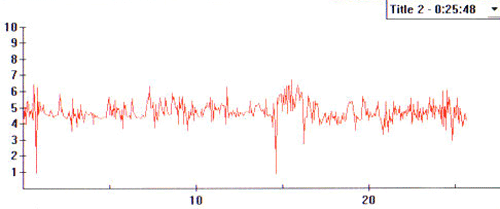
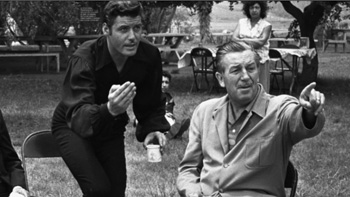
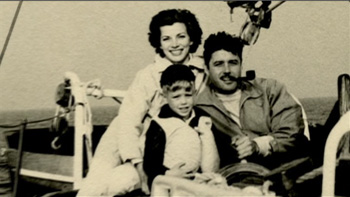
![]()
![]()

![]()
![]()


